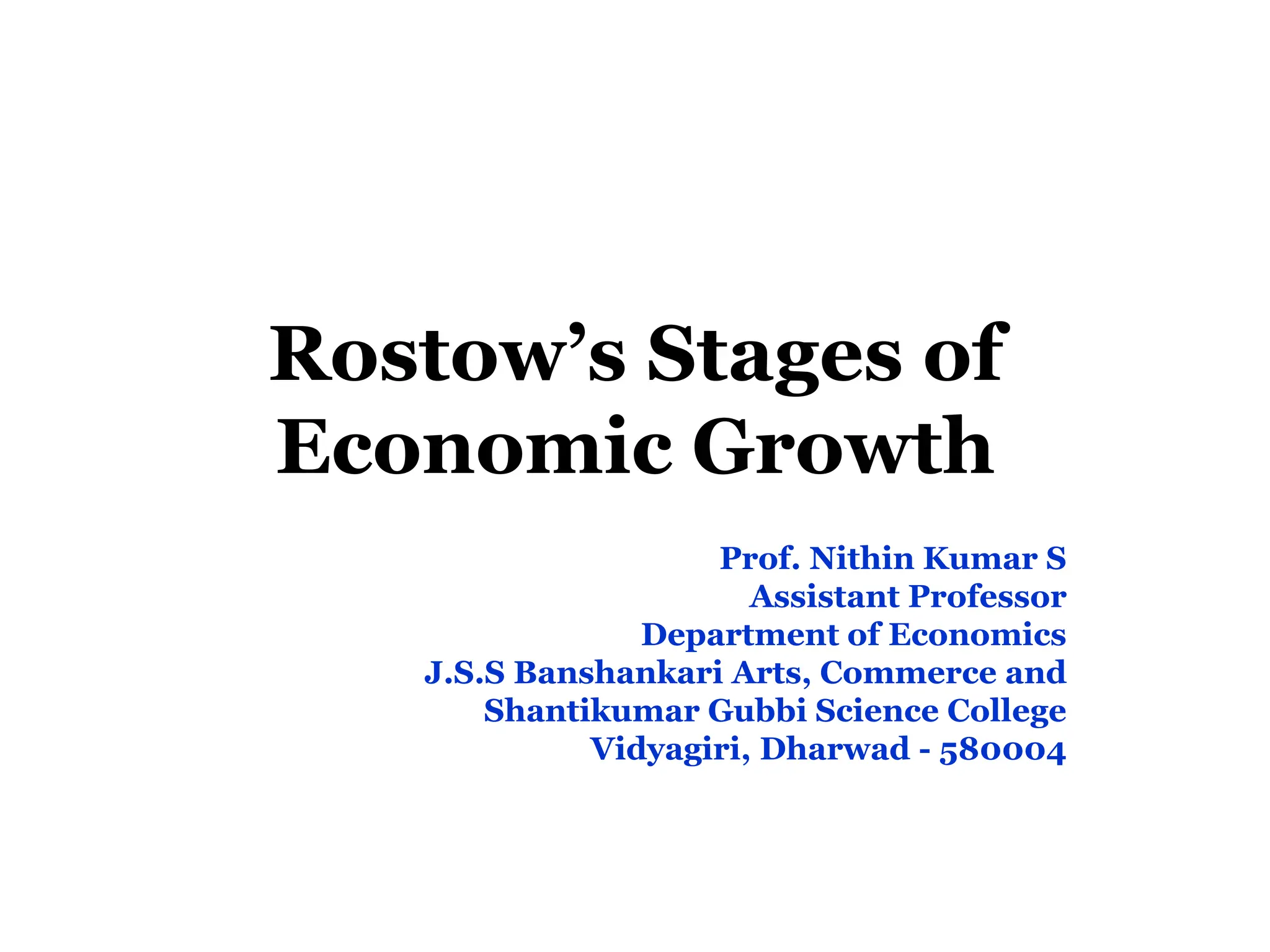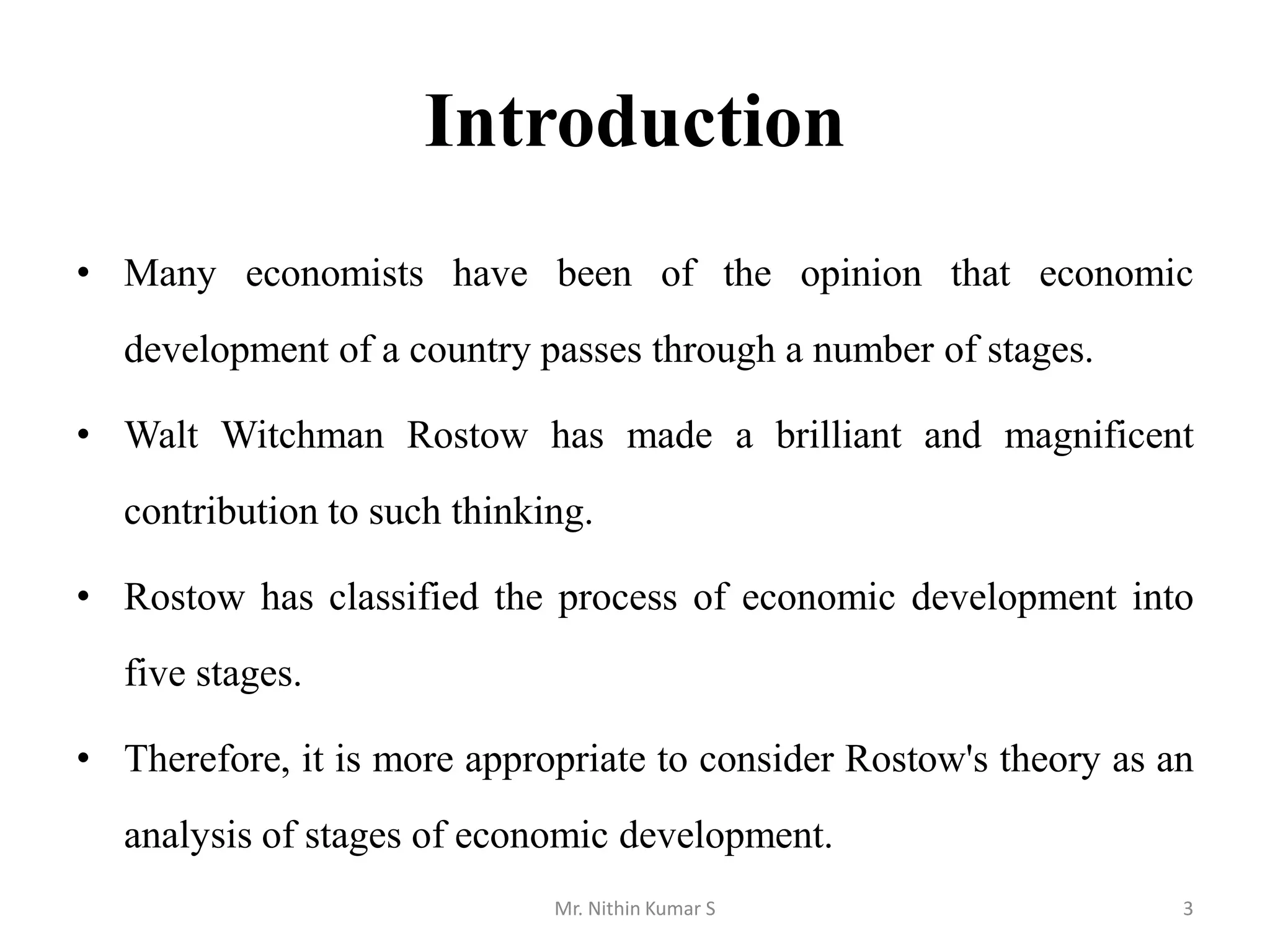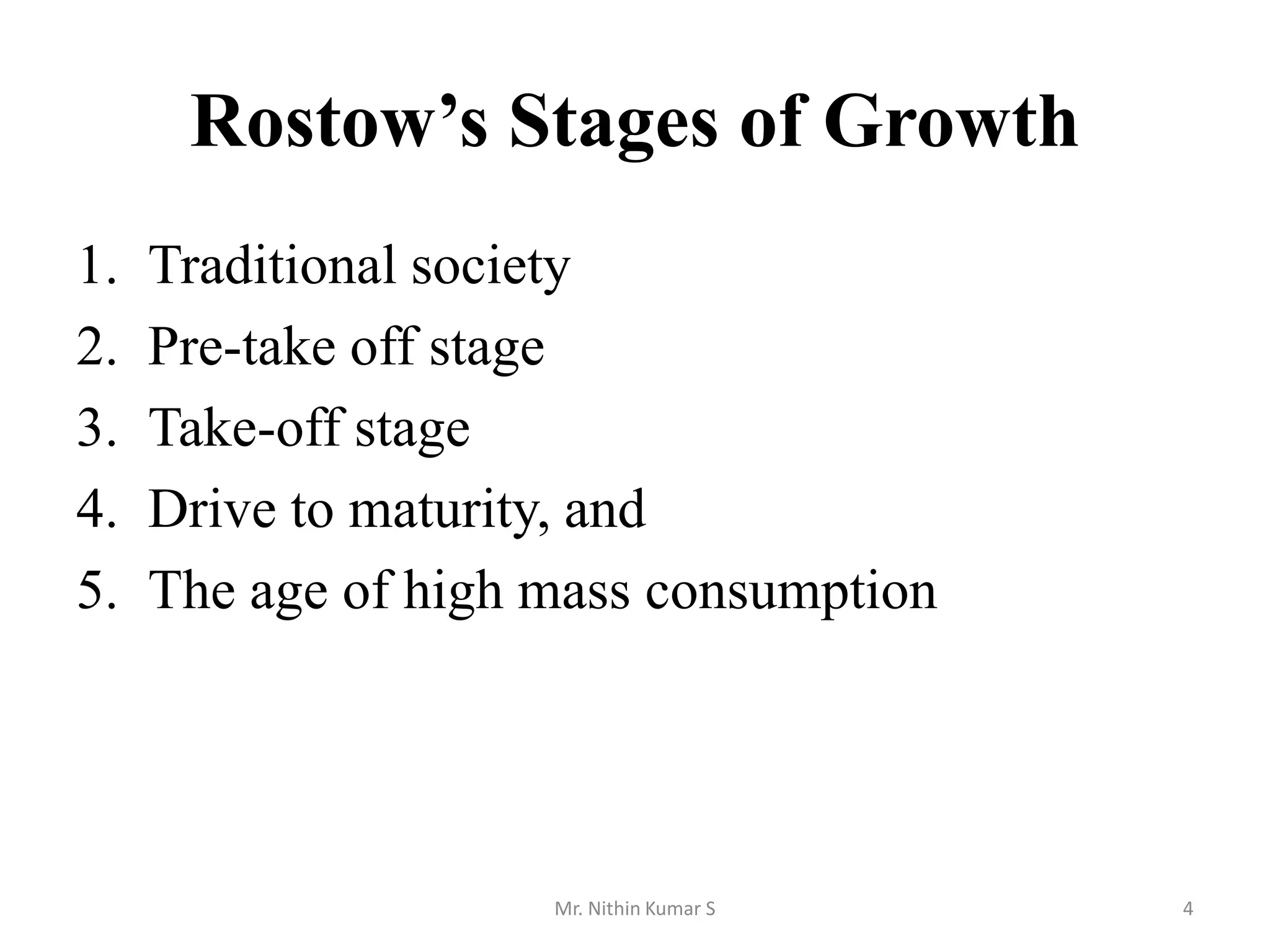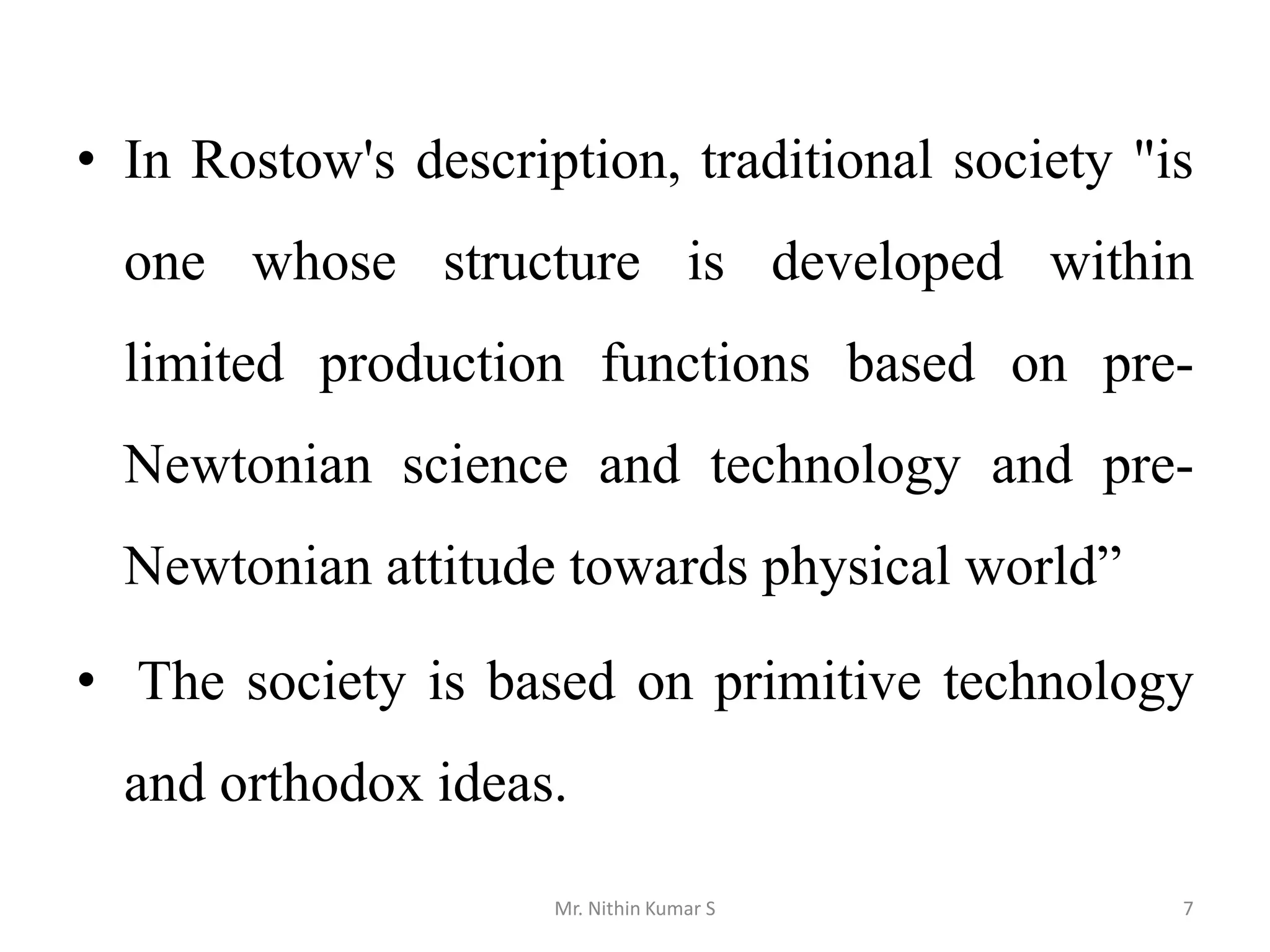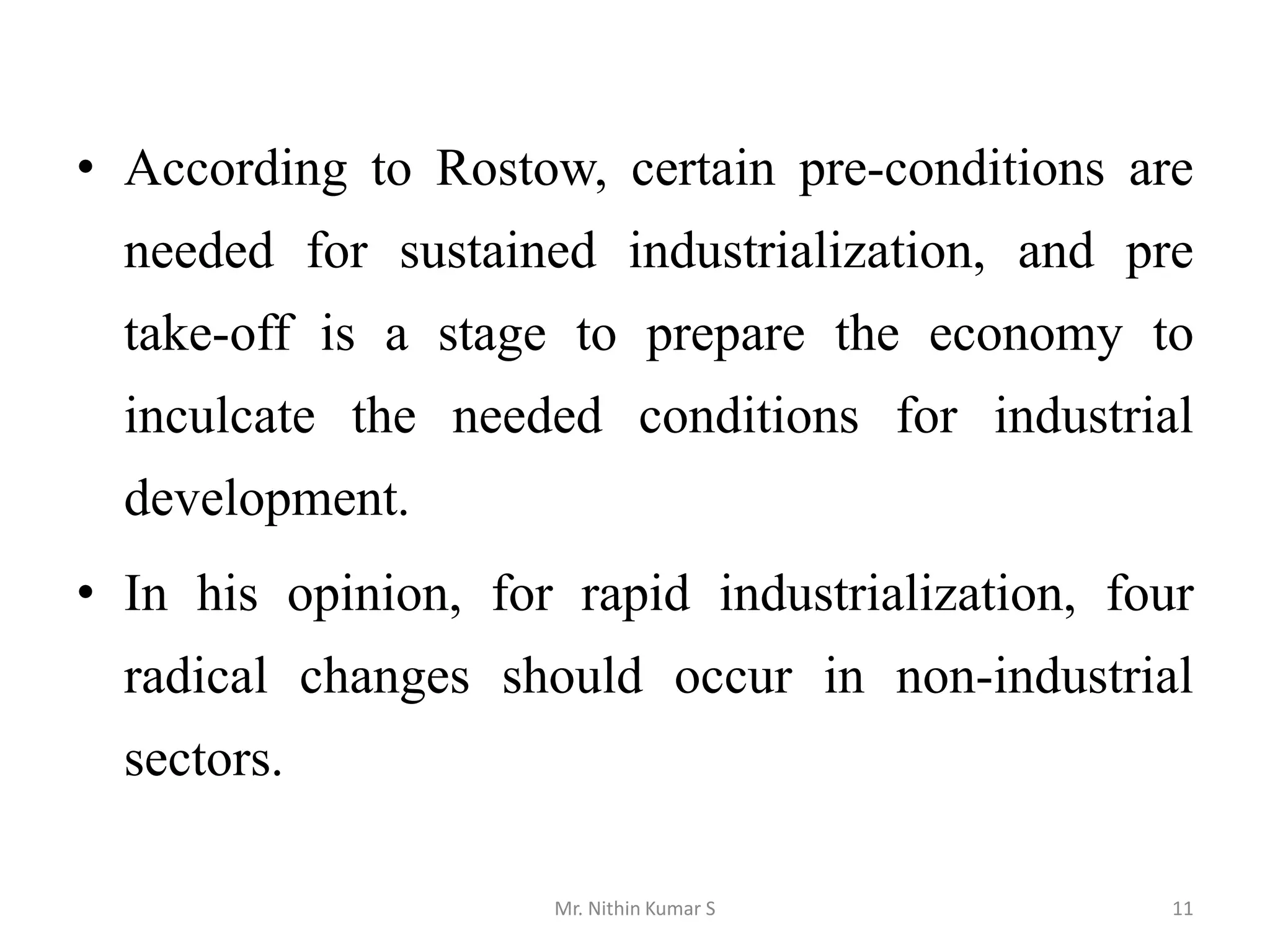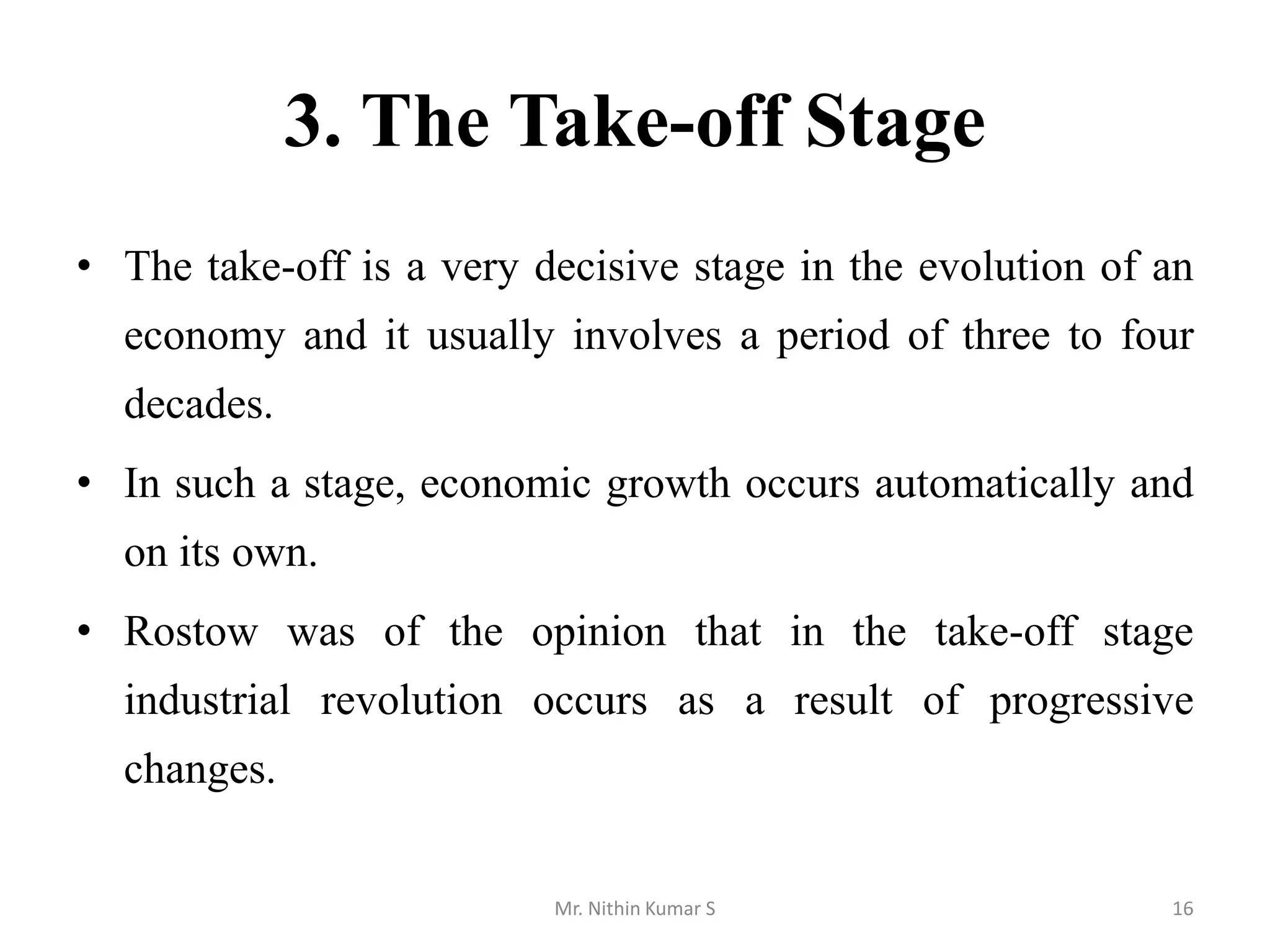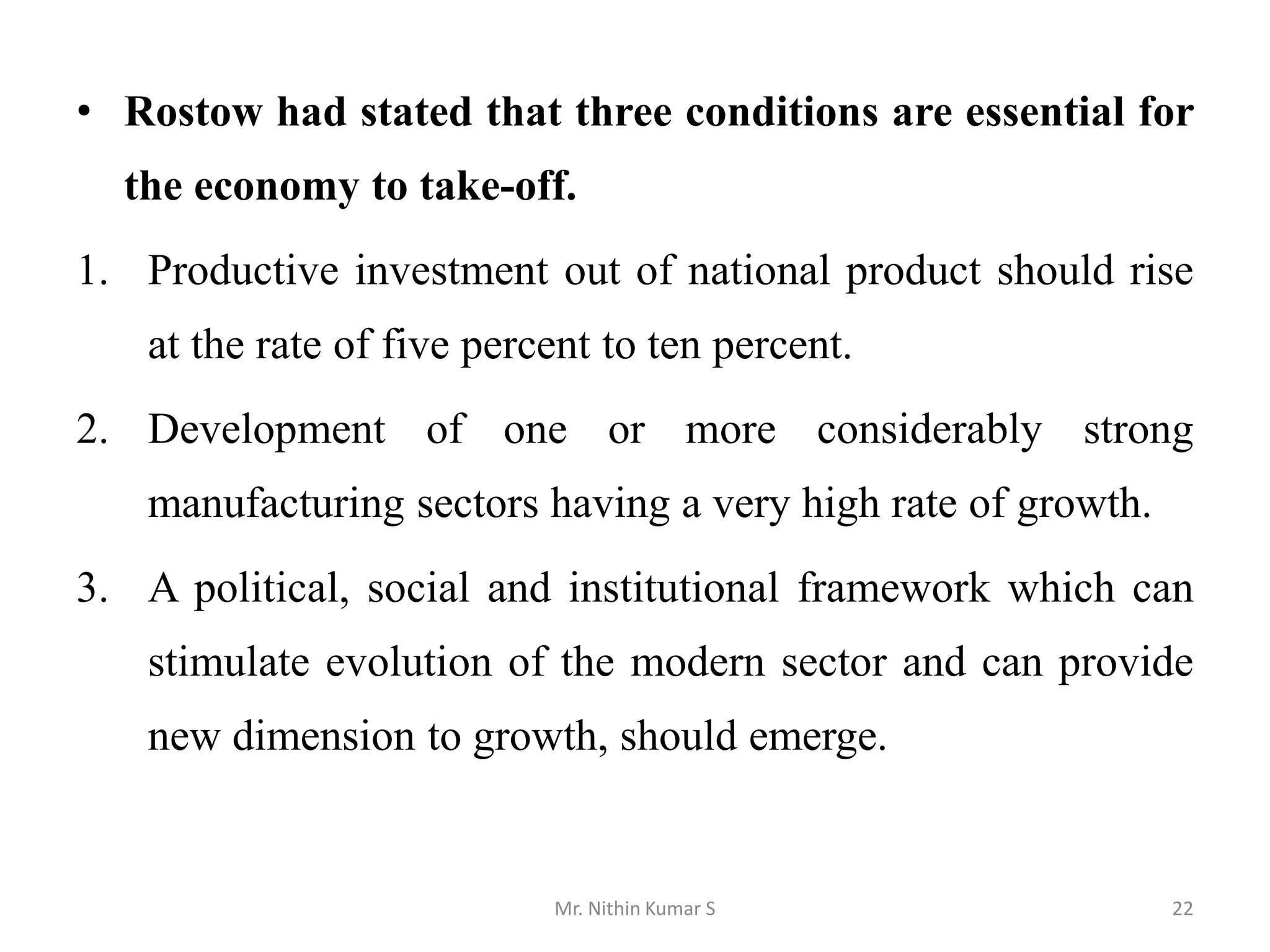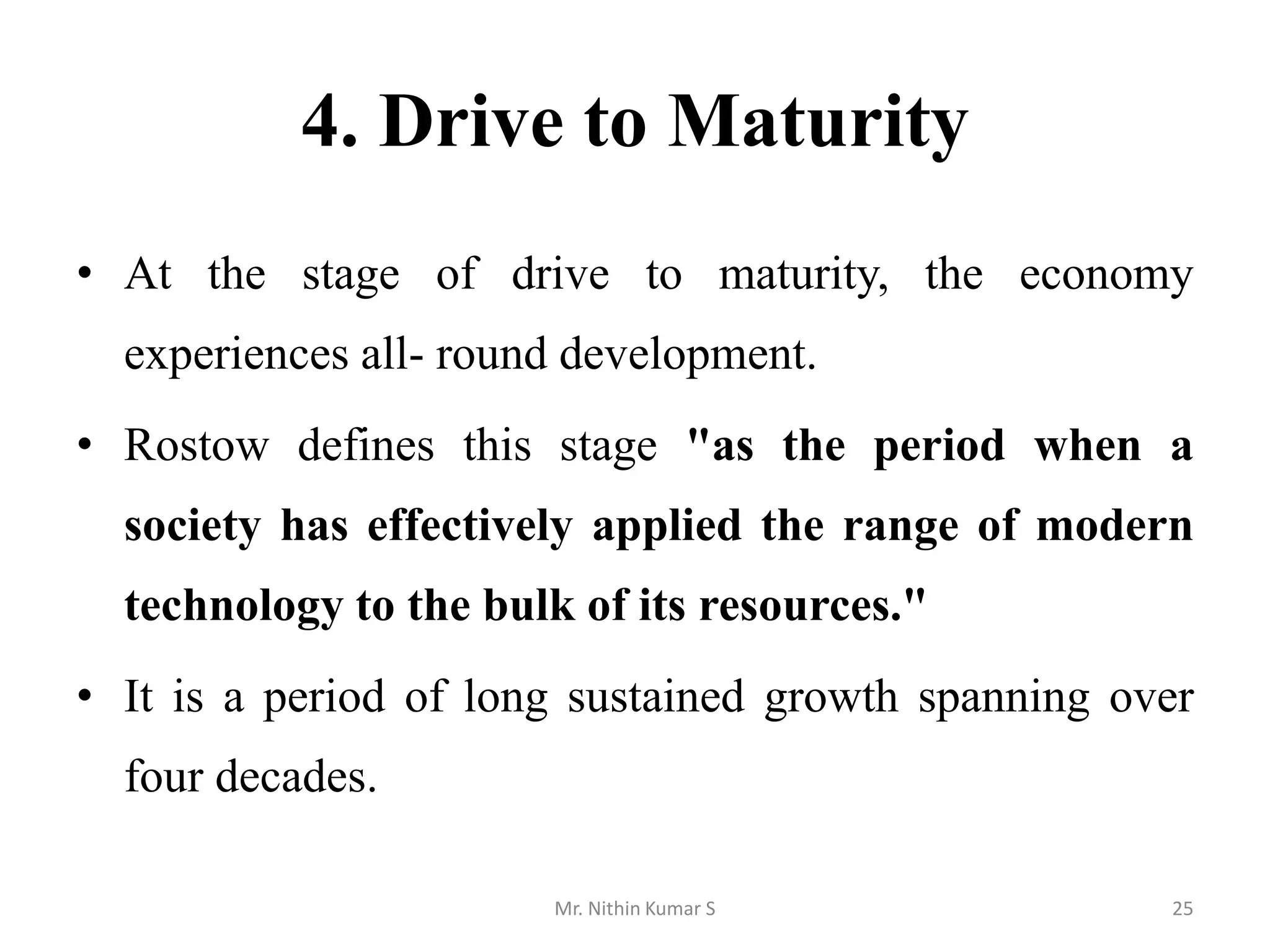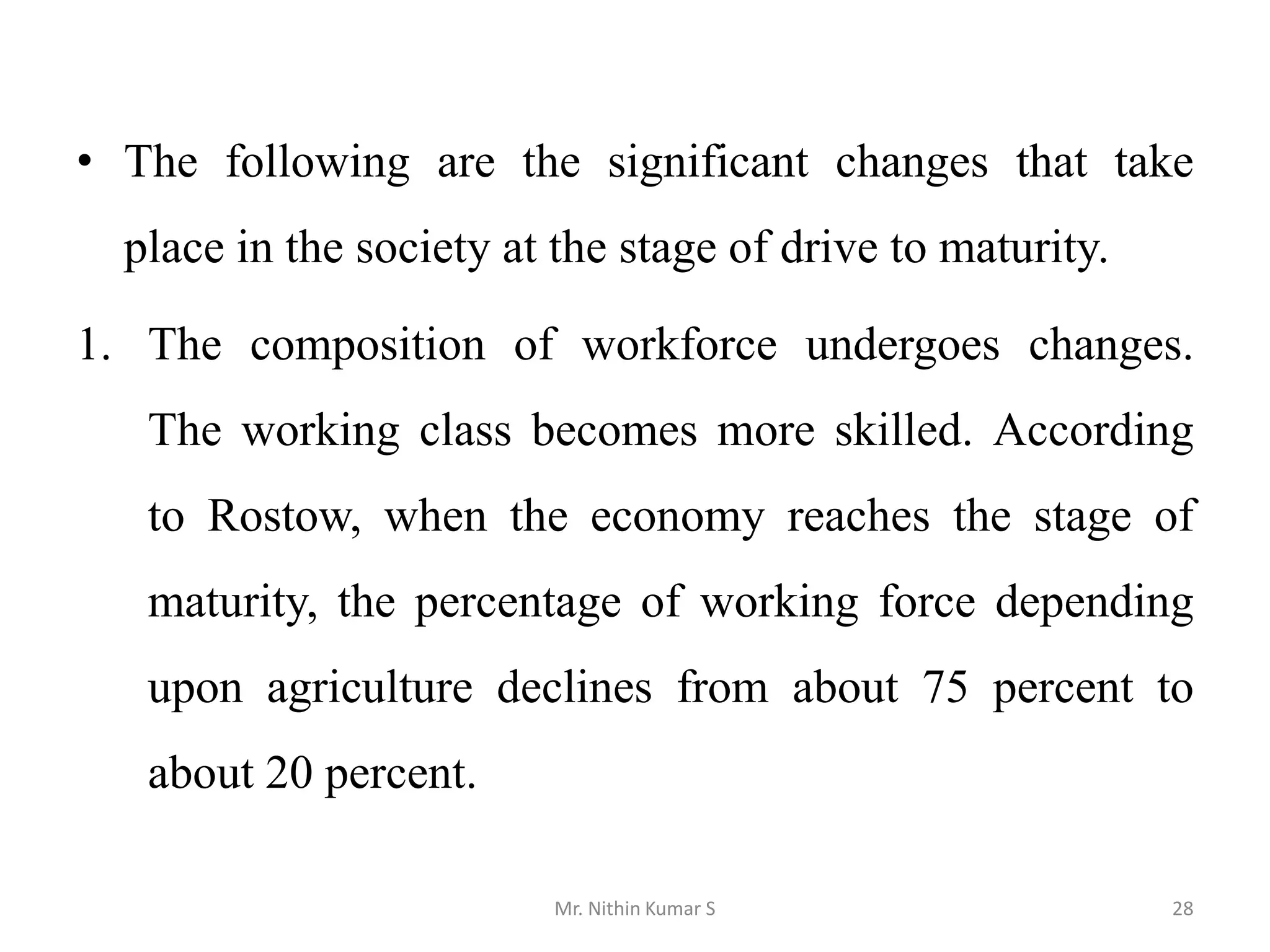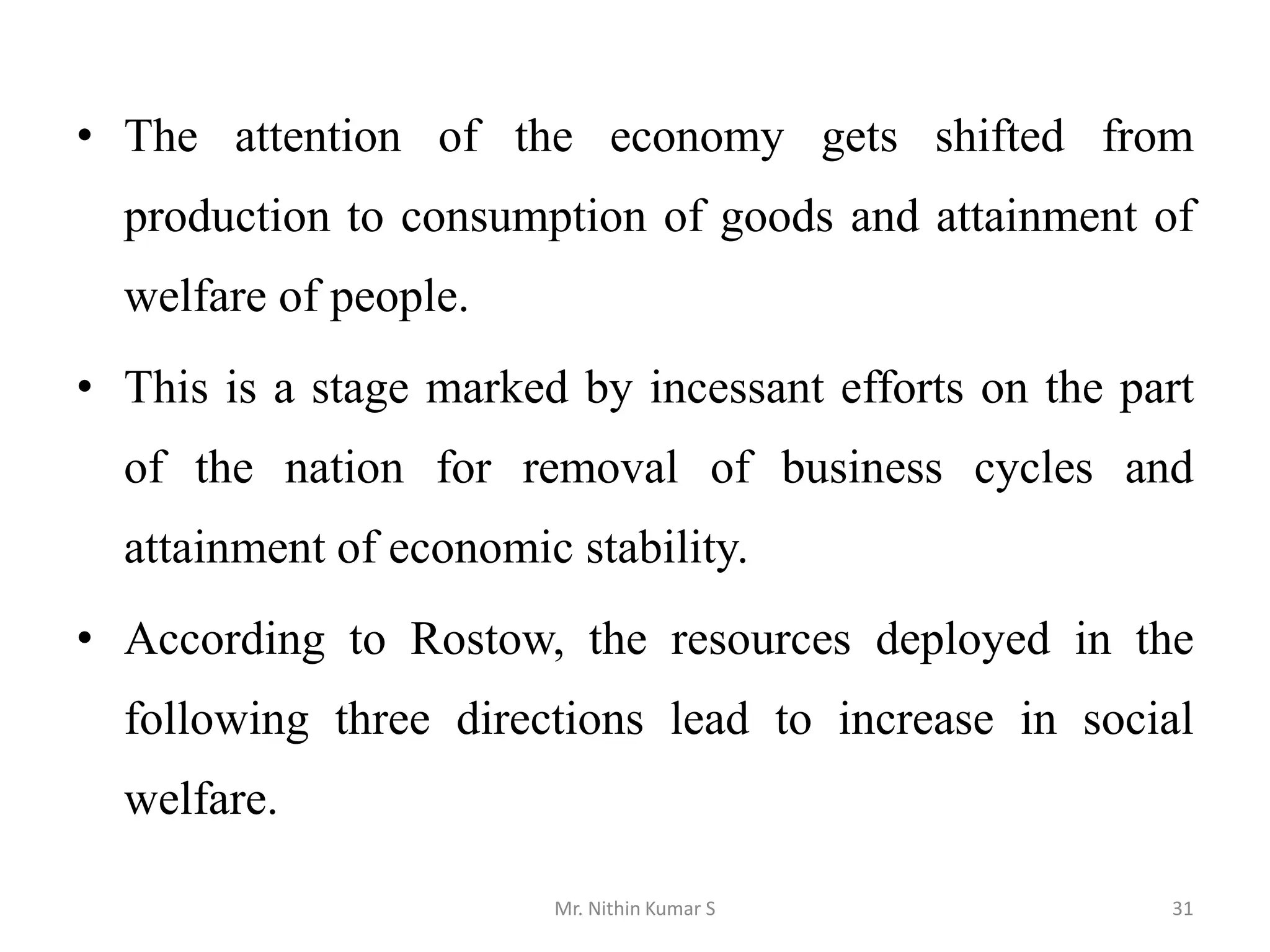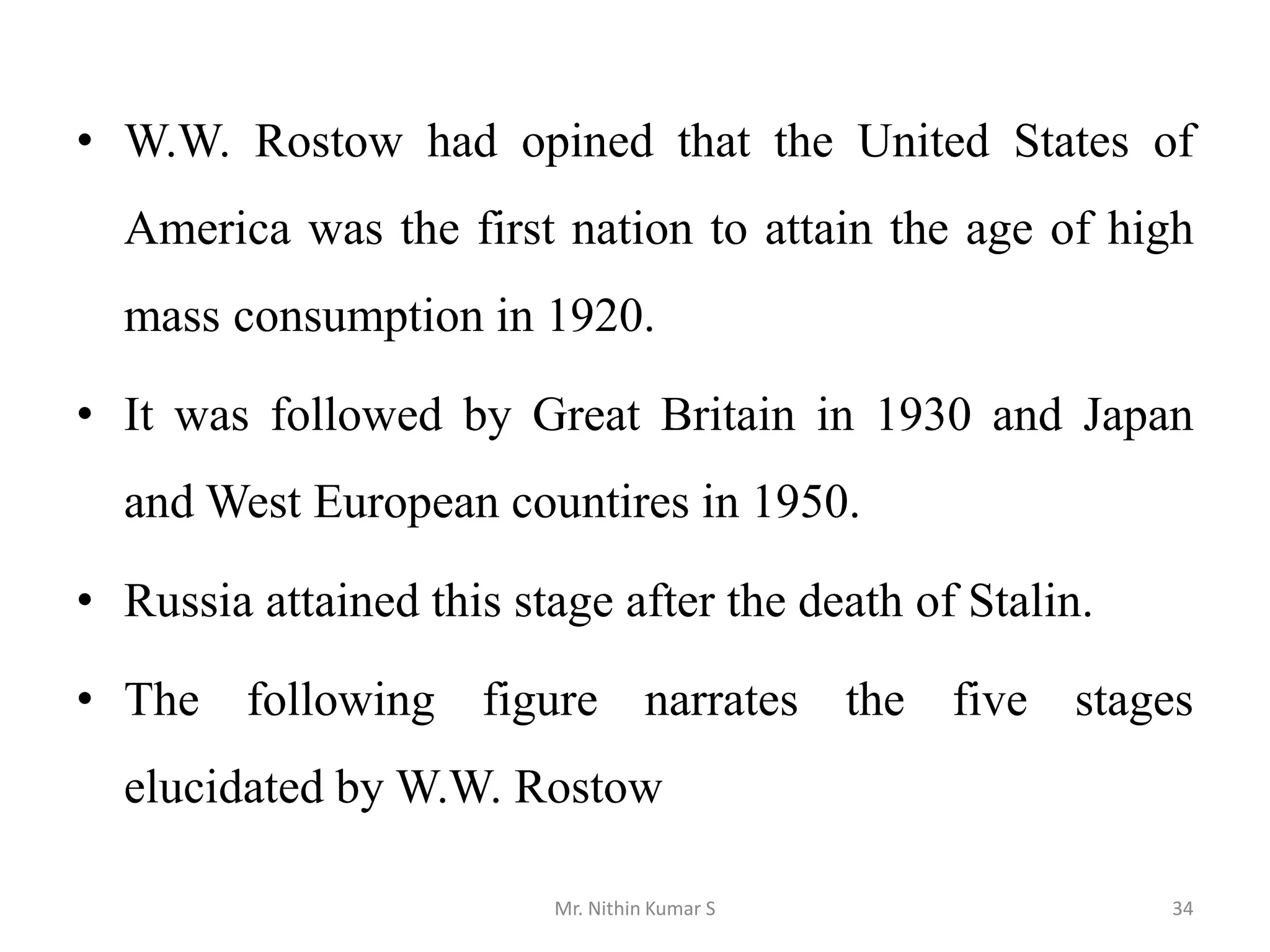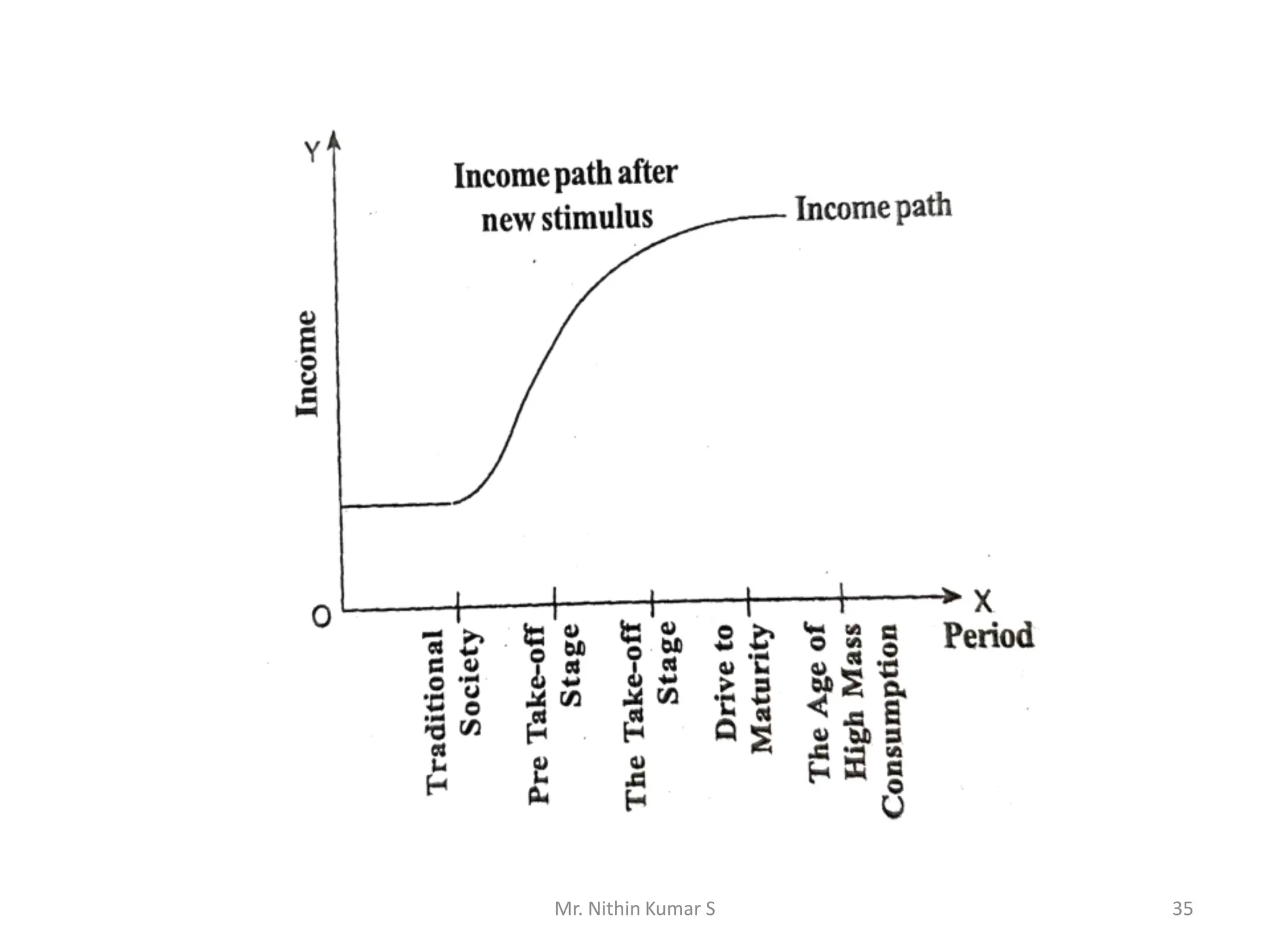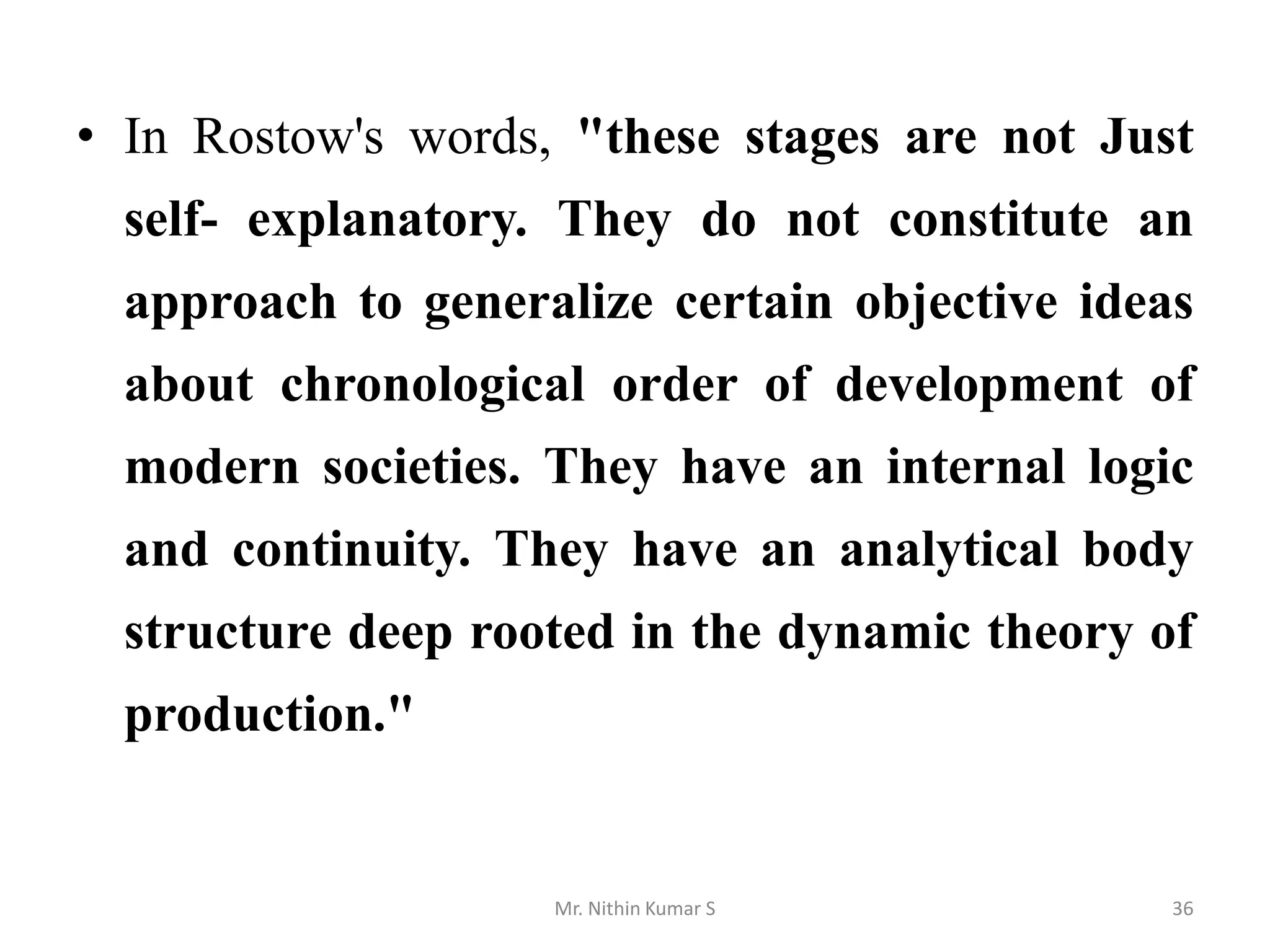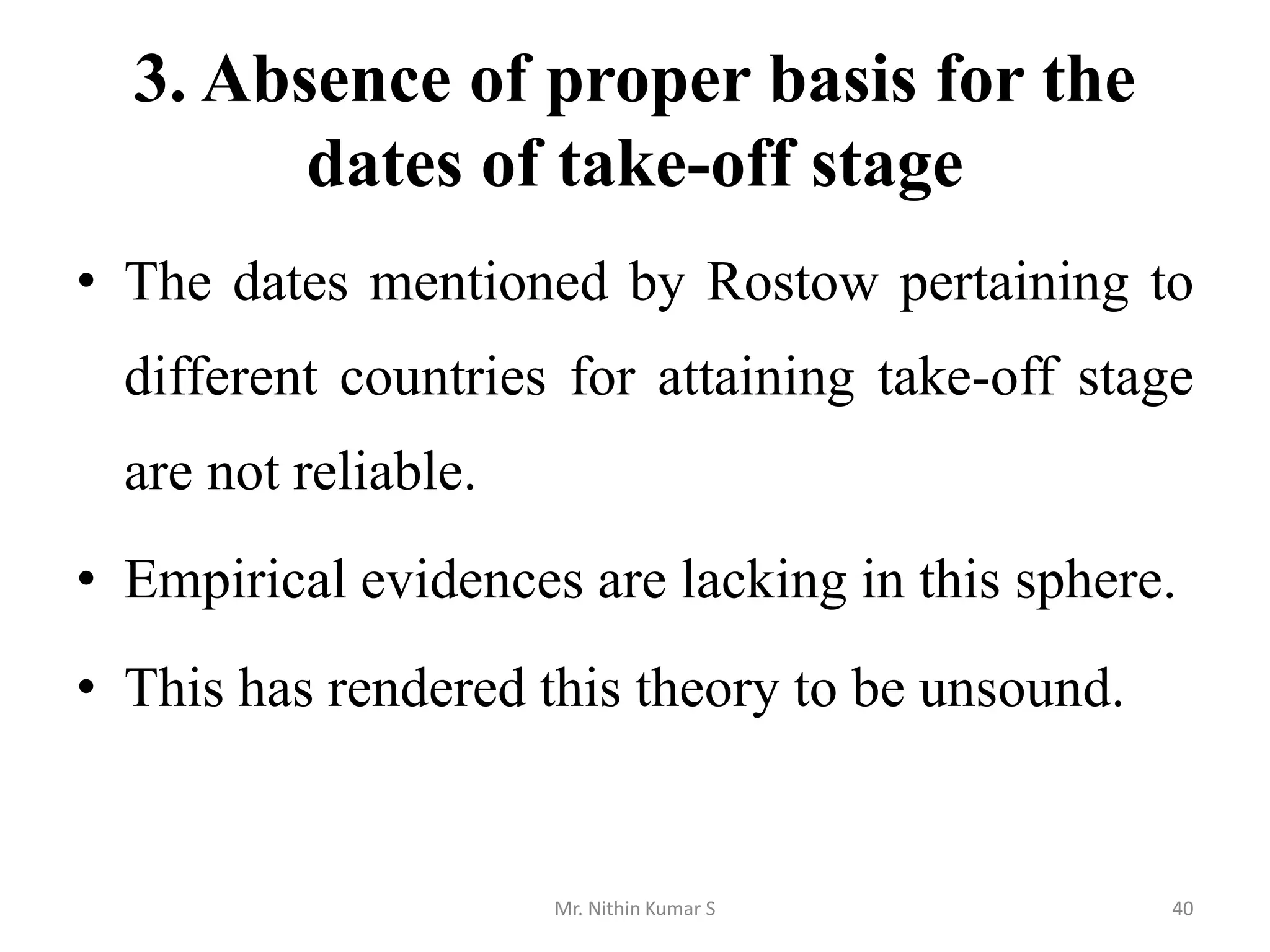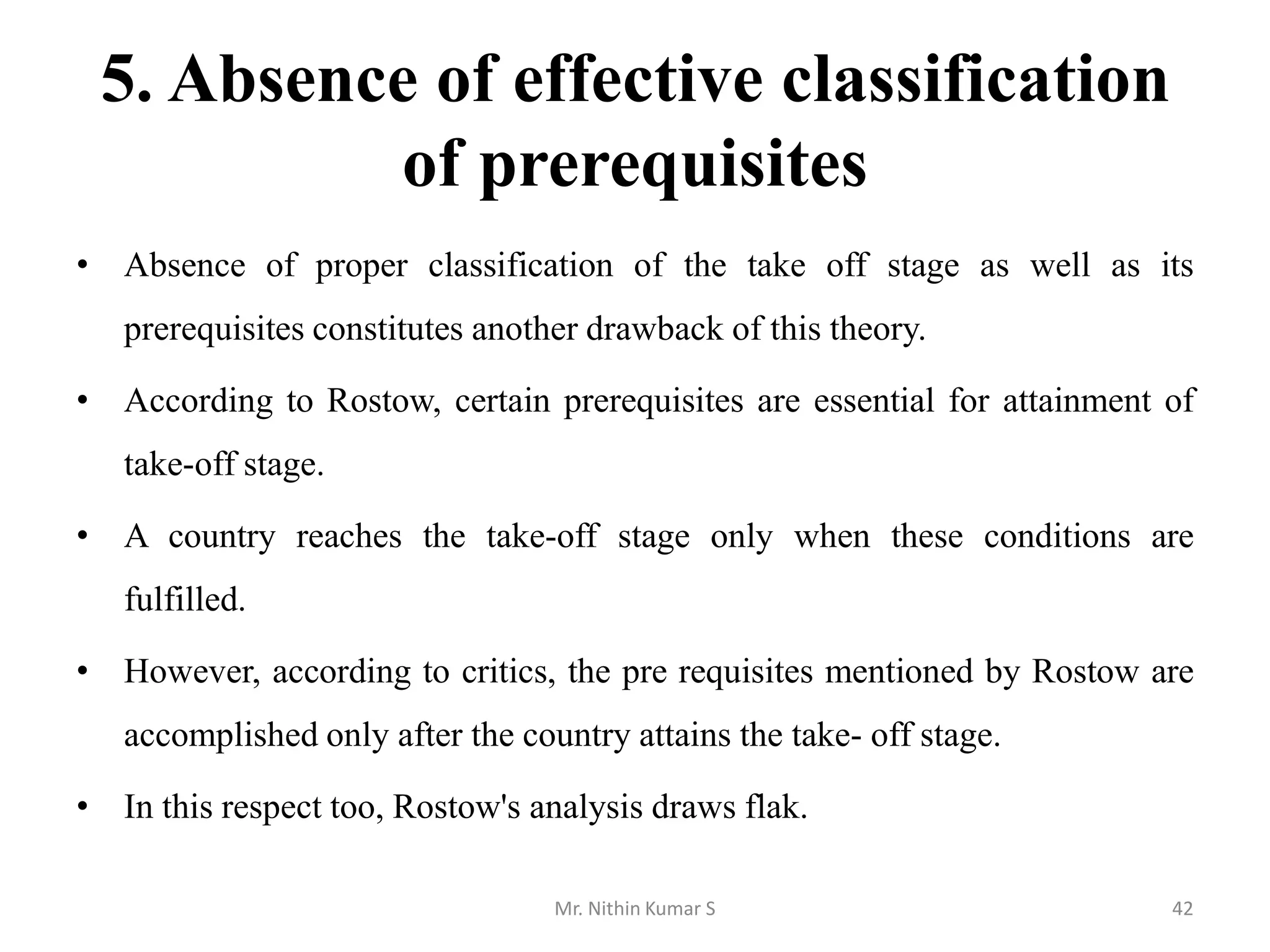1. Rostow's theory classifies the process of economic development into five stages: traditional society, pre-take off, take-off, drive to maturity, and age of high mass consumption.
2. The take-off stage is characterized by an industrial revolution that leads to self-sustaining economic growth over 3-4 decades. Three conditions are needed for an economy to reach take-off: investment must rise to 5-10% of national product, strong manufacturing sectors must emerge, and institutions must support modern sector growth.
3. During the drive to maturity stage, which can last over 4 decades, technology is applied across all resources and economic development becomes automatic through high savings and investment.
